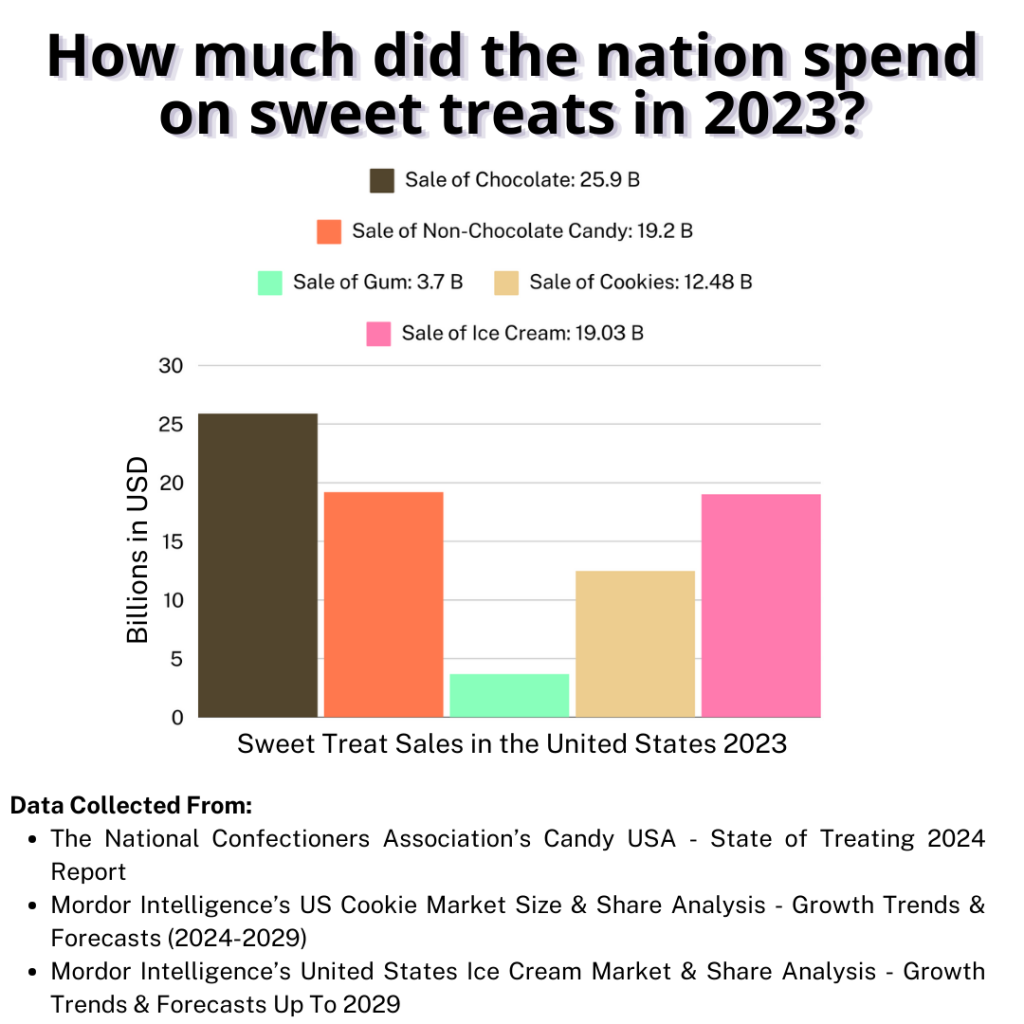Little treats lead concerns over consumer spending post pandemic

Ready to go deli and bakery items ready to sell at Lake Effect Cafe, one of the many spots students can go to get a little treat. Photo by: Leila LaJoie.
OSWEGO, N.Y. – Getting a little treat to start your shift or to reward yourself for surviving the day has led consumer spending to rise, but this could be a concern.
Buying a beverage or a snack as a reward isn’t a new concept, but it has become more normalized after the pandemic hit. The treat-forward approach allowed for consumers to reclaim stability after it was lost in early 2020. The concept also guarantees individuals to have a “small little ritual” back in their lives.
Haley Girodano, a SUNY Oswego student employee for the Crossroad Cafe in Marano Campus Center, said she takes part in purchasing a little treat to get through the day.
“Oh yes, a hundred percent all the time,” said Girodano.
She adds that weekly she spends around $15 on the pick-me-ups. Girodano’s co-worker, Kennedi LaValley, also said she took part in picking up a little treat here and there. As for their customers, both employees have noticed that other students indulge in the treat-forward approach, especially on baked goods.
“All the time, students come in and get three or four cookies,” said Girodano. “Every day that bakery case is pretty much empty.”
Although little treats can be appetizing to consumers, it could be damaging to how individuals budget going forward. Especially when it comes to sweet treats. In 2023, the United States spent over $80.3 billion on sweets ranging from gum, candy, cookies, and ice cream alone.

With such a high number just for some items that would be considered under the little treat category, spending can be a crucial aspect to how students and the younger generation will tend and take on other responsibilities that are fast approaching as they get on their feet, such as housing, insurance, groceries, and more.
Student loans can also play a major role in how young adults spend their money after the loan pause ended last October.
From some students on campus, it seemed that the rise of consumer spending on a little treat for students and the younger generation could be due to different factors.
SUNY Oswego student Bradley Jacobs said spending and if it is done responsibly or irresponsibly is based upon how aware an individual is on their own.
“I’ve kind of been more self-taught and aware, especially for my age range as it is, even as a fourth year here,” said Jacobs. “Seeing the younger generation they’re just, they kind of do whatever they want, if there’s any consequences they’re not too worried about it or future consequences and that’s honestly on them.”
Aurora Fitzgerald, another SUNY Oswego student, said that the spending habits could be due to how students and the younger generation were raised and the ongoing inflation happening in the United States.
“I know some parents don’t really care much anymore,” said Fitzgerald. “I really think it’s how they’re raised, but then I think inflation definitely has another thing to do with it, prices have definitely gone up.”
Social media is also another factor as there have been phrases shared or reposted such as “I deserve a little treat” or “you deserve a sweet treat,” on platforms such as TikTok and Instagram from mutuals or influencers to explain and back up their spending habits.
Some SUNY Oswego students, such as Emily Struempfler, have heard of the phrases and have followed through with the influence of purchasing a little treat whether it be just for them or with their friends.
“We go out, we go get ice cream or we go get milk shakes or just anywhere,” said Struempfler.
She said her favorite treat would have to be a banana split, usually from Bev’s, the popular ice cream spot just down the road from SUNY Oswego that attracts the campus and community when it opens for the season. She said she doesn’t think the younger generation is responsible with their spending and that even she is not always as responsible.
Most students said that the little treats were just another example of how the younger generation was not equipped with being responsible in spending, but Pam Cahill said she would disagree. Cahill works in the Lanigan Store on campus and said she thought the students aren’t doing too bad in terms of being responsible with spending.
“I think they’re doing okay with it, I see a lot of them that still have dining dollars left,” said Cahill.
She did say that when comparing generations, the younger ones likely do spend more, but she also does that herself. As well as for the best treats in Lanigan, she notices many students tend to stop by and pick up a Rice Krispy Treat or gum.